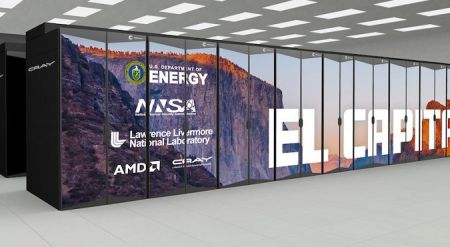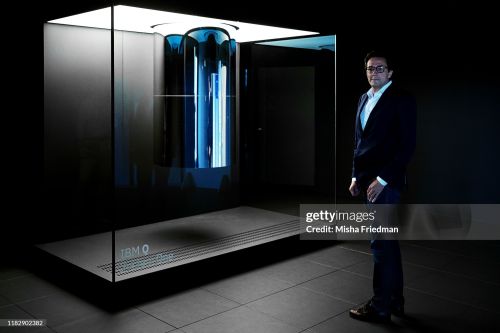User:Darwin2049/chatgpt4 caveats
CAVEATS. The above impressions by notable observers in the field of artificial intelligence and geopolitics is small, unscientific sampling of positions. However in each case these individuals are well respected and known in their fields. From these we propose a few caveats and observations as a way forward.
We propose the tentative conclusion that several factors should condition our synthesis going forward. These include the premises that CG4:
- Inherently Dual Use Technology. Further development of existing tools using more advanced deep learning based systems will entail unforeseeable risks. the prospect that totally unforeseen and unexpected uses will emerge must be accepted as the new reality; like any new capability it will be applied toward positive and benign outcomes but we should not be surprised when adverse and negative uses emerge. Hopes of only positive outcomes are hopelessly unrealistic.
- Cognitive Prosthetic: (CP). The kinds of tasks that CG4 can perform suggest that it is well beyond the category of an appliance but rather is closer to a heavy industrial tool. Because of its ability to adapt its functionality to user defined task it might be more accurately something akin to a prosthetic. But in this case one that supports and extends human reasoning ability. CG4 possesses no sense of self, sentience, intentionality or emotion. Yet it continues to demonstrate itself to be a very powerful tool for expression or problem solving.
Given its power to offer cognitive amplification we suggest further that it can form the basis of a more advanced form of symbolic representation and communication. - Emergence - CG4 has shown novel and unexpected capabilities. New and unanticipated capabilities have become evident. There have been several instances in which CG4 demonstrated its ability to abstract from prior learning the need for new learning. These capabilities had not been anticipated by the designers and appeared to have spontaneously arisen. However though no one so far is proposing that sentience, intentionality, consciousness or self reference might be present. The lights clearly are on but the doors and windows are still open and there is still nobody home.
- Moving Target. Artificial intelligence, deep learning and large language models reporting has bloomed. The speed at which topics that focus on various aspects has gained speed in recent weeks and months. The upshot has been that it has become difficult to prioritize what to include or focus on when including topics for this discourse. Should a later version of this subject emerge from this original attempt it might do well to focus on specific sub topics.
- Hosting: Von Neuman Architecture. To date, CG4 is functioning on an ensemble of von Neuman machines. As it is currently accessed has been developed and is hosted on classical computing equipment. Despite this fact it has shown a stunning ability to provide context sensitive an meaningful responses to a broad range of queries. However intrinsic to its fundamental modeling approach has shown itself as being prone to actions that can intercept or subvert its intended agreeable functionality. To what extent solving this "alignment" problem is successful going forward remains to be seen. As training data sets grew in size processing power demands grew dramatically. Subsequently the more sophisticated LLM's such as CG4 and its peers have required environments that are massively parallel and operate at state of the art speeds. This has meant that in order to keep training times within acceptable limits some of the most powerful environments have been brought into play. Going to larger training data sets and keeping time to training conclusion may call for hosting on such exa-scale computing environments such as the El Capitan system or one of its near peer processing ensembles.
The current high ground of computing is found when the focus shifts to exa-scale supercomputing. At this scale of processing throughput the terms typically used are about processing happening at the rate of trillions of floating point operations or teraflops (TF). The costs associated with constructing these kinds of devices are typically in the range that only national governments are able to afford their construction and operation. They are typically used the most advanced scientific, engineering and national defense related work. Mostly they are constructed of processing elements described as blades which are an entire processing element combined with its memory and communications mechanisms all on a single board. In the higher throughput machines communications will be mediated by fiber optic communications to enable the highest rates of data transfer possible.
Yet despite these machines representing the maximum of possible computing capability they will shortly be superseded by devices that will render them museum pieces. A close comparable analogy would be the inexorable improvement in sailing technology during the eighteen and nineteenth centuries.
During the height of nautical technological advancement the clipper ship became the high end of sailing technology. These ships made use of many more sails than earlier sailing ships, were narrow, long and carried relatively less cargo. However they were very fast by comparison to earlier designs.
Likewise exa-scale computing machines will be eclipsed by the momentary advent of quantum computing devices. Initially they may serve as simple "front end" or communications devices for the machines that will follow.
Exa-Scale Computing. The El Capitan supercomputer is scheduled begin operation at the Lawrence Livermore Lab in California sometime in 2024. Performance estimates suggest that it will be capable of operating at 2 terra flops (2TF)/sec. It is expected to have the ability to move data between its various elements at the rate of 12.8 terabits/second between each of its blades. Though this machine may be the fastest computing ensemble on the planet when it becomes operational it will still function using the von Neuman architecture model. The upcoming transition to quantum computing will render it as an example of the height of classical architecture computing in much the same way that clipper sailing ships represented the height of sail based technology just before the advent of steam ship.
As quantum computing capabilities become increasingly available, reliable and standardized we should expect that more and more artificial intelligence and deep learning capabilities will migrate to these new environments.
This transition to quantum computing will represent a complete phase shift in terms of what will become possible. The difference will represent a historical demarcation. Computing and processing will eventually be described as computing before quantum and computing after quantum. The break will be comparable to humanity before it tamed fire or developed writing and how humans were able to shift into entirely new forms of life and civilization as a result. This will be a before/after event. What kinds of capabilities and developments will result can only be guessed at.
Deep learning systems may show themselves to be incomparably more adept at discerning human mood, sentiment, and state of mind. These developments will build upon and elaborate further existing concepts and theories of mind that are available now. Construction of dramatically more detailed models of industrial and design processes will accelerate the development of insights into fundamental realities of chemistry, physics, materials and other areas of endeavor that have proven difficult to extremely difficult for existing computational environments. These will all become as child's play.
Possible early candidates of focus may include:
- Epigenetics. Roughly 2% of the human genome actually codes for development of the human organism; researchers described the rest as "junk DNA"; during the early years of the mapping of the human genome coding genes were identified; but the rest was considered to have no purpose; later research has shown that so-called "junk DNA" is actually involved in activating or deactivating certain genetic pathways depending upon development or environmental signals; more detailed analysis of these signaling pathways may reveal the mechanism underlying torpor and hibernation like that found in bears and other animals that go into suspense during lean periods;
- Connectome. Advances in fMRI and other techniques have identified more or less well defined connection pathways in normally functioning human brains; other forms of connection maps have been correlated with various inherited or developmental anomalies such as spectrum autism;
- Senolytic Treatments (age arrest/reversal). Recent advances in the mapping of senolytic pathways have led to the recognition of many of the contributing factors associated with what is described as "aging". Recent understanding of the role of the telomere molecule's role in the aging process will set the stage for remarkable advances in the control of physical decline with the passage of time.
- Novel Pharmaceuticals. Recent advances in fMRI in humans has identified how highly specific neural pathways can be identified; a step beyond this ability to map certain pathways will be to activate them;
- Novel Materials. Advances in the field of nanotechnology have produced substances with tensile strength greater than spider silk; further advances should result in substances with properties beyond today's bullet proof vest, carbon nanotubes based fibers or organ repair materials;
- "The Dead Men". In the Pohl Anderson novel "Beyond the Blue Event Horizon" alien technology is found abandoned in the asteroid belts between Mars and Jupiter; in one instance an advanced form of memory decoding, capture and rehosting leads to quasi-conscious entities known as "the dead men"; these are electronic embodiments of previously existent individuals; their new embodiment allows them to interact with humans and each other though they no longer possess a human body;
- Tissue/Organ Regeneration. The Michael Crichton novel Chromosome Six postulates the ability to genetically modify simians using human DNA; a range of organs can then be hosted using these simians as hosts; later variants have shown that pluripotent stem cells can be used to accomplish the same end;
- Highly Detailed Geopolitical/Diplomatic Models. Advanced diplomatic exercises have recently come to light wherein war-game situations are presented to high level individuals such as military or diplomatic staff to attempt to anticipate and manage unfolding high stakes geo-strategic crisis situations;
In the case of the epigenome current evidence suggests that what used to be called "junk DNA" is now recognized as being an element of the DNA molecule responsible for switching on or off specific genes. This switching can occur as a result of natural developmental process or external environmental changes. For instance the ability of the bear family to hibernate during winter months might be the result of epigenetic programming. Were this capability to be identified in the human genome then the ability of humans to delay aging for months or years could become possible. The obvious corollary would be that were an individual to discover that they were developing an intractable medical condition - intractable by current medical standards that is, then they might elect to have themselves placed into a condition of stupor or hibernation for some period of time ranging from months or longer until a suitable means of management or correction became possible.
Because of advances in the understanding of aging at the molecular level, specifically the recognition that the "end caps" of the DNA molecule posses a molecular structure labeled as the telomere molecule then we might see rapid advances in the ability to arrest many of conditions commonly associated with aging.
Another case in point might be the ability to unravel the mechanism that underlay human attention and learning. The British sketch artist, Stephen Wiltshire is very plain evidence that the human brain is capable of the most incredible feats of sensorial capture and recall. The neurological condition that he has been identified as having is described as being with the spectrum autistic range. Recent advances in the understanding of neurology suggest that our former belief about neural plasticity might require modification. The result meaning that there may be the possibility that ordinary humans might be capable of modifying their connectome to perform specific tasks at levels far beyond what are commonly considered possible.
The leap forward in capabilities that can be expected by or before the late 2020's will represent a far wider margin of difference in terms of quantitative and qualitative performance as it would mean to go from the Santa Maria of 1492 that Columbus used to reach the New World as might be seen in a Ford Class Super Carrier of the early 2020s. These gigantic constructions are floating cities that double as mobile military air bases.





